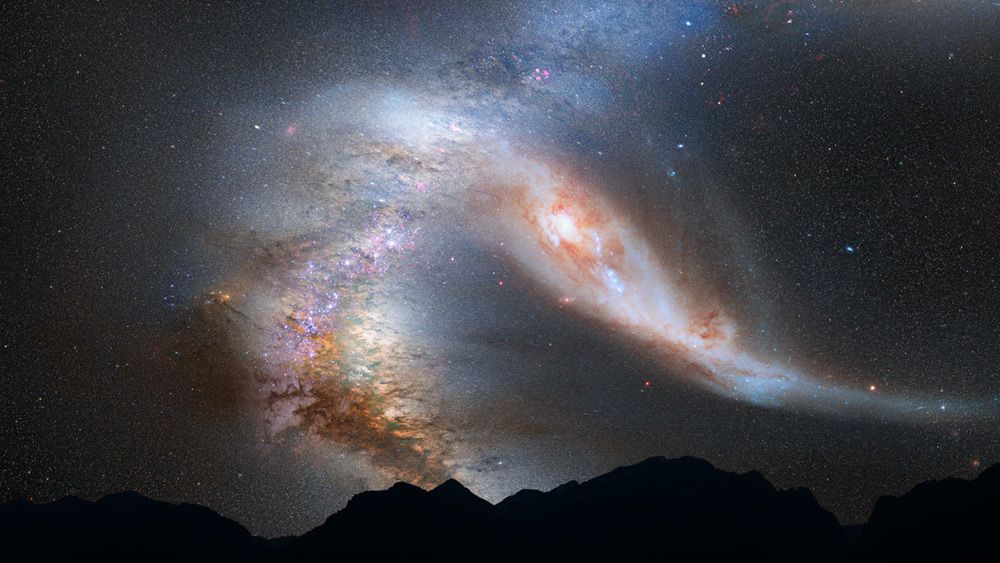New data from the Gaia space telescope has allowed scientists to estimate when the last major collision between the Milky Way and another galaxy occurred. It has produced many strange groups of stars and, as it now turns out, has only recently occurred.

Galaxy merger
Scientists have long known that galaxies occasionally collide with other galaxies and merge into a single entity. The Milky Way has experienced such events in the past. Recently, scientists have been able to determine that the latter occurred more recently than previously thought.
The new data was obtained using the Gaia space telescope. This instrument is used primarily as an astrometric instrument, that is, it tracks the exact position and motion parameters of hundreds of thousands and millions of stars. That is why one of the scientific tasks that it performs is the search for peculiar wrinkles, shock fronts that line up groups of stars in one line.
They are the result of mergers with other galaxies that took place billions of years ago. They are especially abundant in the halo, the scattered spherical component of our star system. It was its observation that allowed scientists to conclude that the last big collision occurred between 8 and 11 billion years ago.
This event has been named Gaia-Sausage-Enceladus (GSE) and is believed to be the source of most of the wrinkles found in our galaxy. At the same time, the latter are gradually smoothed out, and their number decreases.
Virgo’s radial collision
However, Gaia continued its research and on a survey completed in 2022, it became clear that there are too many wrinkles in our galaxy for them to have formed so long ago. Therefore, scientists resorted to their new analysis and came to the conclusion that a significant part of them came from another merger that occurred recently.
It has saturated the central regions of our Galaxy with young hot stars. At the same time, spectroscopic studies showed that they were not part of another star system, but formed after the encounter.
It occurred about 2.7 billion years ago and was named the Virgo Radial Merger by researchers. This happened when the Solar System and the Earth already existed, and life developed on the latter, although only unicellular.
This means that a significant portion of the stars in the Milky Way joined after life on Earth had already arisen, and this event did not cause any terrible consequences. This means that the merger with Andromeda, which should occur in a few billion years, will not lead to any catastrophic events either.
According to phys.org


